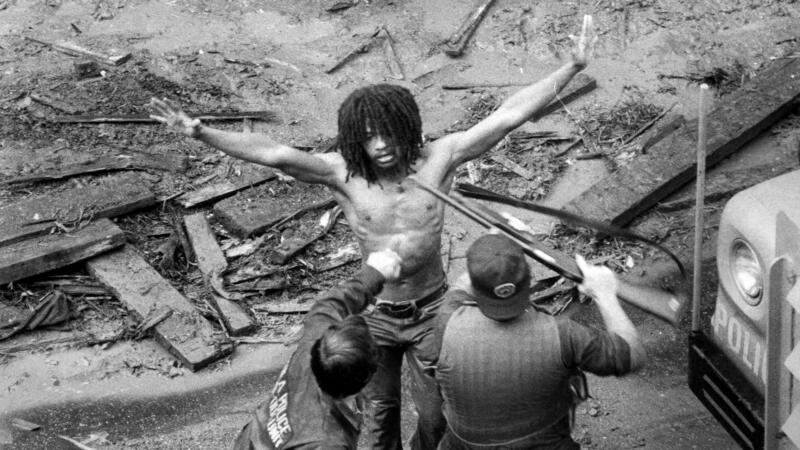
The Emmy award-winning documentary showcase Independent Lens announced earlier this week that it will stream for free, ten of its popular titles – feature documentaries united by the creative freedom, artistic achievement, and unflinching visions of independent filmmakers – from past seasons, from Monday, February 20 through Saturday, March 18 at pbs.org/independentlens. The ten films include some of the most acclaimed titles from the over 350 films that have been broadcast on Independent Lens since its launch on PBS in 2003. One of the ten titles now available to stream is Jason Osder’s “Let the Fire Burn.”
There are moments of tragedy that seem to spring out of nowhere and hold us glued to our television screens computer monitors, watching a disturbing and bewildering mini drama play out in real time, like something out of a movie. But it isn’t a movie, it’s real life, and when all is said and done, we ask ourselves the same chorus of questions: how, and why, and what is it we’re supposed to gain from all the carnage when it’s over?
It’s this process of trying to understand that lies at the center of director Jason Osder’s debut documentary feature, “Let the Fire Burn.” The film tells the story of the mostly forgotten events of May 13, 1985, when 11 members of the black liberation group MOVE died after a 24-hour standoff with Philadelphia police. Founded by group leader John Africa, the organization practiced a “back-to-earth” lifestyle, swearing off all technology, eating only raw foods, and changing all of their surnames to “Africa.”
By 1985, the group’s previous run-ins with the law (they had at different points been deemed a cult and a terrorist organization due to their past use of firearms) came to a head when neighbors in the Cobbs Creek area of Philadelphia filed complaints of health hazards, child neglect, and harassment. Neighbors were evacuated, and on the approval of the mayor, police and fire commissioners, a bomb was dropped on the roof of the row house that served as MOVE headquarters. And while there were later claims that the mayor had instructed police to put out the blaze, a decision was ultimately made to “let the fire burn.”
What happened next was the destruction of over sixty homes, and the deaths of six adults and five children in the MOVE house, the youngest only a toddler.
There have been many documentaries comprised entirely out of archival footage, but few as powerfully and masterfully structured as this one. Weaving together field news reports, a 70s documentary about MOVE, and recorded tapes of the subsequent public committee hearings and depositions that took place months after the incident, Osder creates a visually textured and fascinating piece of storytelling that steers clear of editorialization and manipulation by allowing the content to speak for itself.
Perhaps the most powerful moments in the film happen in the deposition of 13-year-old Michael Moses Ward, one of only two people to make it out of the doomed house alive. Soft-spoken and dazed, Michael, known as “Birdie” Africa during his days in the house, serves as the perfect representation and constant reminder that wrapped up in the political cloud that surrounded the MOVE organization and its dealings with authorities, were children who, as pointed out by the examiner, were innocent and blameless in the entire affair.
By the final moments of “Let the Fire Burn,” there are hints of corruption and negligence on both sides, but there is still no concrete answer to the questions we always ask to make sense of tragedy and terror.
But more important than the hows or the whys, indeed the most important thing about the documentary, is the question of what makes incidents like these, so widely followed and scrutinized when they happen, so utterly forgotten later on.
You can watch “Let the Fire Burn” in full, streaming on Independent Lens here.
Trailer below:
Zeba Blay is a Ghanaian-born film and culture writer based in New York. She is a regular contributor to Huffington Post, Africa Style Daily, and Slant Magazine. She runs a personal movie blog, Film Memory, and co-hosts the podcast Two Brown Girls. Follow her on Twitter @zblay.
